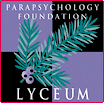 |
 |
| Click here for the PF Lyceum Site Index
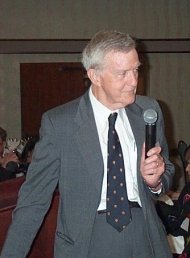 An Appreciation PF Lyceum Blog #17 posted February 26th, 2007 Carlos S. Alvarado, Ph.D. Although many of us involved in parapsychology have made contributions to the discipline, few of us can claim that we have made fundamental contributions. Not everyone can be described as shaping the course of several areas of the field in such a way that, without that effort, the field itself would have been noticeably diminished. One such person was Ian Pretyman Stevenson, who passed away on February 8th, 2007 (his impressive list of publications appears here). While his work is generally identified with reincarnation studies, I will present a more general overview of his contributions. Stevenson was born in Montreal, Canada, on October 31st, 1918. After some initial studies at St. Andrews University, he obtained an M.D. at McGill University in Montreal in 1943, and later became a psychiatrist. Stevenson was Professor and Chairman at the University of Virginia’s (UVA) Department of Psychiatry between 1957 and 1967. Between 1967 to 2001 he was both Carlson Professor of Psychiatry and the Director of the Division of Personality Studies at UVA. At the time of his death Stevenson was Research Professor of Psychiatry at the same university (for additional information click here). Stevenson’s initial work focused on a variety of psychological and psychiatric topics (click here for some examples.) However, a dissatisfaction with the current models of human personality led him to explore the psychical research literature. This literature — such as the publications of the London-based Society for Psychical Research, and such figures as F. W. H. Myers — led him eventually to change the focus of his career to the point that he became a full time worker in parapsychology. (For autobiographical accounts, click here and here). 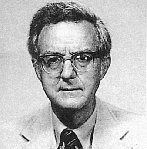 An early mention of parapsychology appeared in his article “Scientists with Half-Closed Minds,” published in the November 1958 issue of Harper’s Magazine. He mentioned the field as one of several instances of scientific antagonism and resistance to new ideas. In this paper he wrote that the “data of parapsychology portent, I believe, a conceptual revolution which will make the Copernican revolution seem trivial by comparison” (p. 69). An early mention of parapsychology appeared in his article “Scientists with Half-Closed Minds,” published in the November 1958 issue of Harper’s Magazine. He mentioned the field as one of several instances of scientific antagonism and resistance to new ideas. In this paper he wrote that the “data of parapsychology portent, I believe, a conceptual revolution which will make the Copernican revolution seem trivial by comparison” (p. 69).
This “conceptual revolution” referred to the possible existence of a nonphysical component in human beings, something that guided Stevenson’s work, and has guided the work of countless psychical researchers in the past. Stevenson concluded in an early paper that parapsychological phenomena could change our view of the human mind: “Many persons have thought that mind is merely a name for certain kinds of experiences; that minds have no real existence; and that mental activity cannot occur apart from the brain. A number of evidences interfere with the acceptance of this view. Parapsychological studies provide one group of such evidences. For they show that the mind can function without its physical senses. Thus they open — or re-open as religious believers would say — the possibility that the mind can also function without the brain or body to which those senses are attached” (Stevenson, 1959b, p. 25). Years later he developed the topic further. As he wrote: “I conjecture … that the mind has a somewhat variable attachment to the brain, rather as the connection between the engine and wheels of an automobile may vary with changes in the clutch. In … dreams, when we are under the influence of hallucinogenic drugs, and as death approaches … the mind is more detached from the brain than it normally is … In these freer conditions we notice a greater tendency for the presentation in consciousness of ordinarily unconscious memories, for synesthesiae to occur, and also for the occurrence of direct (non-sensory) communication between one person to another” (Stevenson, 1981, pp. 137–138). Stevenson’s first parapsychological papers were published in 1959. One appeared in the Journal of the American Society for Psychical Research, entitled “A Proposal for Studying Rapport Which Increases Extrasensory Perception.” The other, “The Uncomfortable Facts about Extrasensory Perception,” was published in Harper’s Magazine. This slowly led to his involvement in different areas of parapsychology. 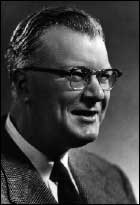
In 1967 Stevenson established the Division of Parapsychology, known today as Division of Perceptual Studies. The Division was funded in part by a grant provided by Chester Carlson, the inventor of xerography. This was to be Stevenson’s base of operations for the rest of his life. (The photograph to the left is Chester Carlson.) Stevenson explored many areas of parapsychology. In fact, while he specialized in reincarnation case studies, and in investigations related to the topic of survival of bodily death, his career encompassed many areas of the field. The following links include brief discussions of his work.
My Interactions with Ian Stevenson I first saw Ian (and I recall with pleasure the day he answered one of my letters and asked me to call him by his first name), at the convention of the Parapsychological Association held at St. Mary’s College in Moraga, California, between August 15–18, 1979. I have a vivid image in my mind of getting a thrill when I saw him at a distance standing in a crowd. I was a student at time but I had been reading in the field for over seven years and was well aware of his stature and contributions to parapsychology. I did not meet him at the convention, and little did I know that I was going to work for him a few years later. I was his research assistant between September of 1982 to May of 1986. This was my first job in parapsychology. I still remember coming to Charlottesville, VA, where Stevenson worked, to be interviewed for the job. I was impressed when I learned that the man himself was going to come to meet me in the lobby of the hotel in which I was staying, and even more impressed when he showed up and walked me back to his office at the University of Virginia’s Division of Parapsychology, located in a detached two-story house on Wertland Street. The interview went well, and I was offered the position. To this day I remember how gentle and patient he was as explained the duties of the position and talked about the Division’s work. He showed me several dramatic photographs of birth defects related to some of his reincarnation-type cases, and said he hoped I would not be shocked by the graphic nature of the pictures. Over the years I learned much from him. This included the importance of: spontaneous cases, of careful scholarly work (including reading the old literature, both English and non-English language sources), of publishing in non-parapsychological journals, and of obtaining proper academic credentials to work in parapsychology. Furthermore, I remember with appreciation his many suggestions to improve some of my earlier papers published in the 1980s. To me, Ian’s contributions were and remain today an example of the difference one person can have in the development of parapsychology. He had an unusual energy and sense of purpose which he directed towards an exploration of dimensions of our beings not recognized by official science. There is no question that Ian was not everyone’s cup of tea, either in mainstream science, or in parapsychology. His work will continue to be rejected by those who define science narrowly as the sole pursuit of the laboratory. Similarly, others have objections to his work due to its conceptual underpinnings. I am referring to the idea of the mind as a causal agency separate from the physical body, and the possibility that it may survive death. Fortunately, not everyone is willing to limit their appreciation of someone’s life work solely on the basis of methodological and conceptual differences. Ever since Ian’s death, I have been haunted by the commonly used expression: “We shall not see his like again.” This applies to him more than to anyone I have ever known. Ian certainly was unique in parapsychology. Precious few modern workers in the field have characterized themselves for their coverage of so many varied topics, of unpopular topics even inside parapsychology, and for having emphasized qualitative studies over statistical ones. Add to this the depth of his case studies, his knowledge and use of the old literature, and his long publications list including papers in high quality general medicine and psychiatry journals), and it will be easy to understand what I mean. By all measures, Ian was not an ordinary person. Aware of skepticism about his research, as well as the consequences of going against the collective, Ian stated: “Scientists who think for themselves have few defenses against the thought-collective” (Stevenson, 1999, p. 267). However, he did not complain and instead left us with an important motivating message in one of his last published papers: “I am myself weary of reading lamentations about Galileo, Wegener, Jenner, and numerous other scientists whose contemporaries at first rejected their novel ideas. We cannot expect all skeptics of new ideas to surrender as a whole, collapsing simultaneously like the walls of Jericho. Each of us must contend for our own new ideas” (Stevenson, 2006, p. 19). Stevenson, I. (1958). Scientists with Half-Closed Minds. Harper’s Magazine, 217, 64–71. Stevenson, I. (1959). A Proposal for Studying Rapport Which Increases Extrasensory Perception. Journal of the American Society for Psychical Research, 53, 66–68. Stevenson, I. (1959). The Uncomfortable Facts About Extrasensory Perception. Harper’s Magazine, 219, 19–25. Stevenson, I. (1981). Can we describe the mind? In W.G. Roll, J. Beloff, & J. McAllister (Eds.), Research in Parapsychology 1980 (pp. 130–142). Metuchen, NJ: Scarecrow Press. Stevenson, I. (1999). What Are the Irreducible Components of the Scientific Enterprise? Journal of Scientific Exploration, 13, 257–270. Stevenson, I. (2006). Half a Career with the Paranormal. Journal of Scientific Exploration, 20, 13–21. *********** |
 |

|
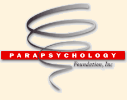 www. parapsychology. org |
||